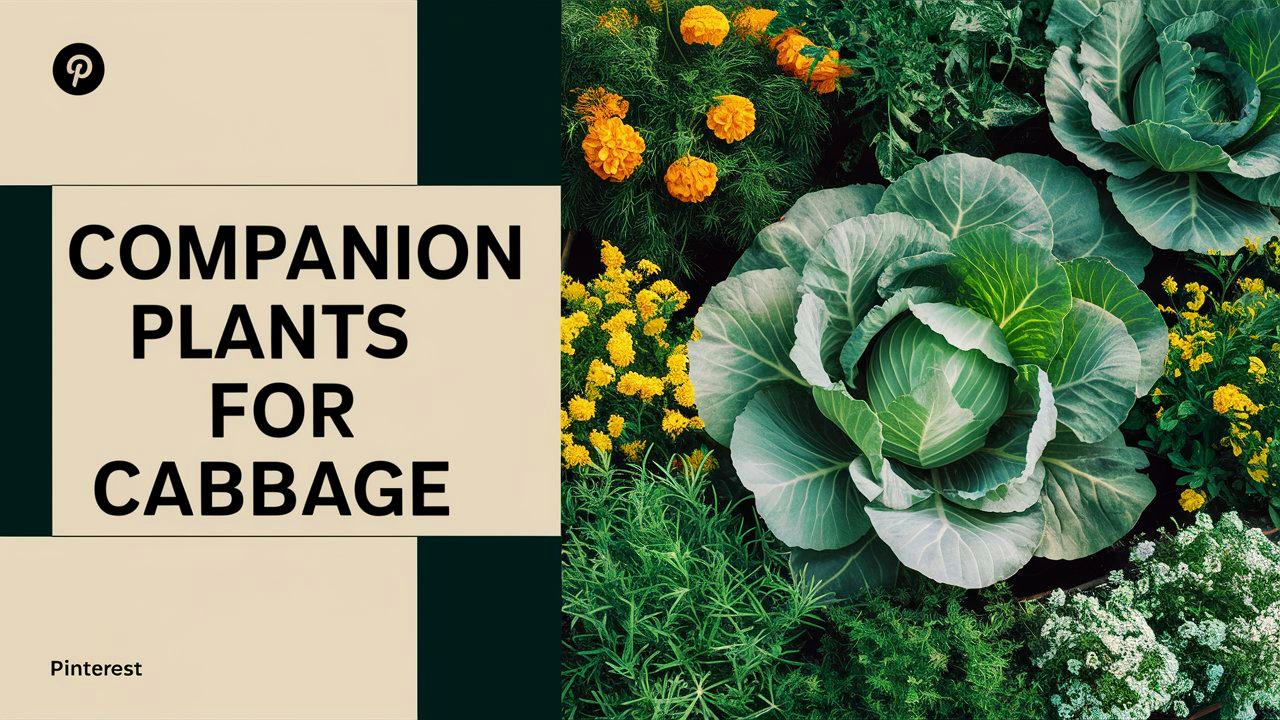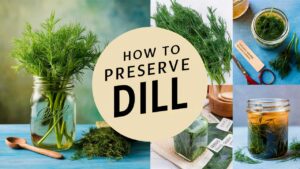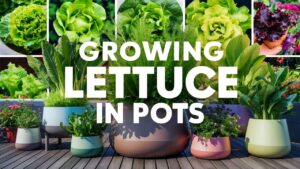When it comes to cabbage, which is known for its susceptibility to pests and specific nutrient requirements, selecting appropriate companion plants can greatly enhance its growth, deter pests, and improve overall garden health. Below, we will explore on a range of floral, herbal, and vegetable companions for cabbage, along with a discussion on plants to avoid.
Vegetable Companions
Carrots
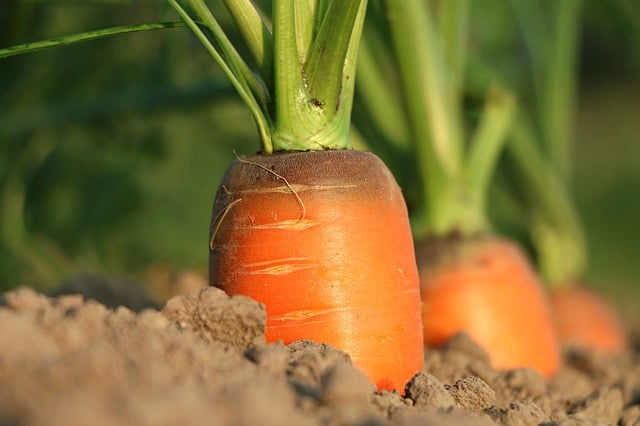
Carrots (Daucus carota) are an ideal companion for cabbage due to their shared environmental preferences. Both thrive in well-draining soil that is rich in organic matter and prefer cooler temperatures. The feathery foliage of carrots offers an added bonus by providing shade to developing cabbage plants, helping to prevent soil moisture loss and controlling weed growth. Furthermore, the deep root structure of carrots helps aerate the soil, improving nutrient absorption for cabbage. Interestingly, carrots can act as a confounding plant for pests; their scent can mask the aroma of cabbage, which can deter common pests like aphids and cabbage moths.
Beets
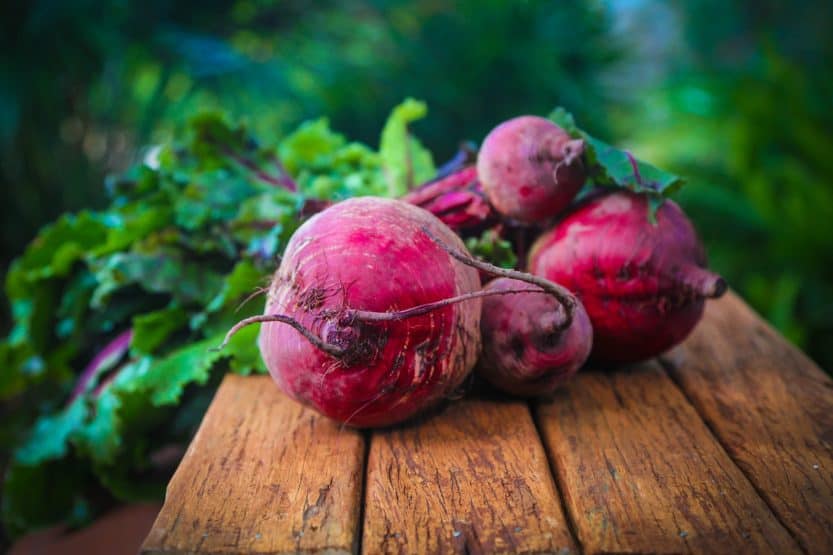
Beets (Beta vulgaris) not only complement the growth of cabbage but also enrich the soil. As a root vegetable, beets have a deeper rooting system that accesses nutrients unavailable to surface-level plants, thereby improving the nutrient content in the surrounding soil for cabbage. The greens of beets are edible and can be harvested early in the season, allowing more sunlight and space for cabbage as it matures. Both plants thrive in similar pH levels (around 6.0 to 7.0), making interplanting straightforward. Their color and foliage also enhance garden aesthetics.
Lettuce
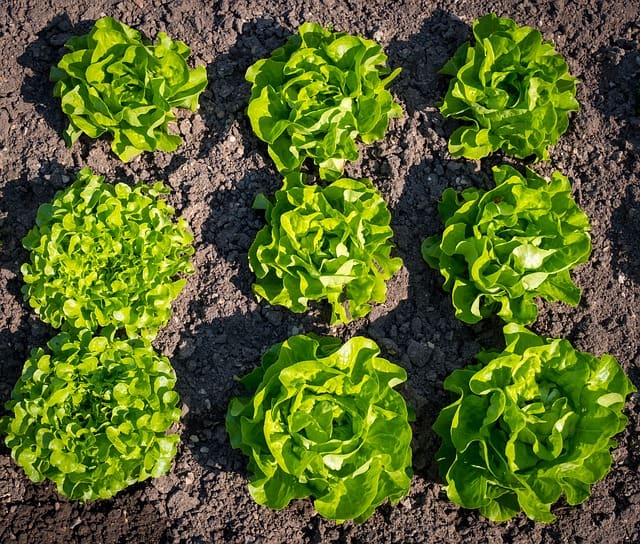
Lettuce (Lactuca sativa) can be extremely beneficial when planted alongside cabbage. It has a shallow root system, allowing it to thrive in the same area without competing for essential nutrients. Moreover, lettuce offers a natural mulch effect, which helps retain soil moisture and suppress weed growth around the base of cabbages. The fast growth cycle of lettuce means it can be planted with young cabbages; when the lettuce is harvested, the mature cabbage is left with plenty of space to grow. Additionally, lettuce prefers cooler weather, which coincides nicely with the prime growing time for cabbage, enhancing the efficiency of the growing space.
Scallions
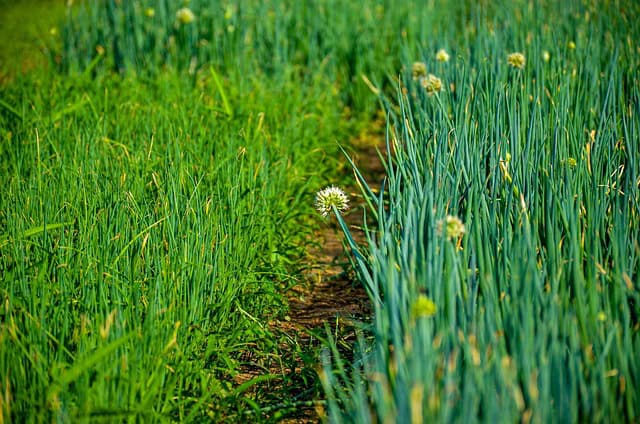
Scallions (Allium fistulosum) bring a host of benefits to cabbage crops. Their pungent aroma acts as a natural pest deterrent, repelling aphids, cabbage loopers, and other unwanted nuisances that target cabbage plants. Both scallions and cabbage thrive under similar care conditions, preferring fertile soil and adequate water. Scallions do not attract pests themselves, making them an excellent companion for protection. When planted closely, they can also serve as a visual marker for cabbage rows, aiding gardeners in identifying sections of the garden.
Spinach
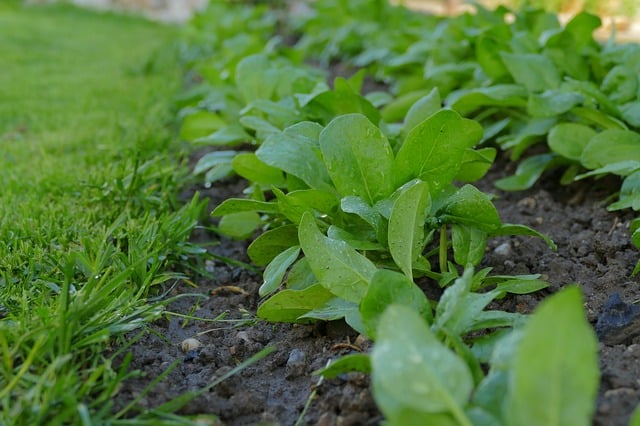
Spinach (Spinacia oleracea) is another compatible plant for cabbage due to its ability to thrive in similar environmental conditions. Both plants perform best in cooler temperatures, which is particularly advantageous in early spring and fall gardens. Spinach grows quickly and can be harvested before the cabbage fully matures, allowing the cabbage to maximize its growth stage. Additionally, spinach provides some canopy cover that mitigates excessive soil warming, which can be crucial for young cabbage plants. The two crops also benefit from a similar pH range, typically preferring slightly acidic to neutral soils (6.0 – 7.0).
Dandelion Greens
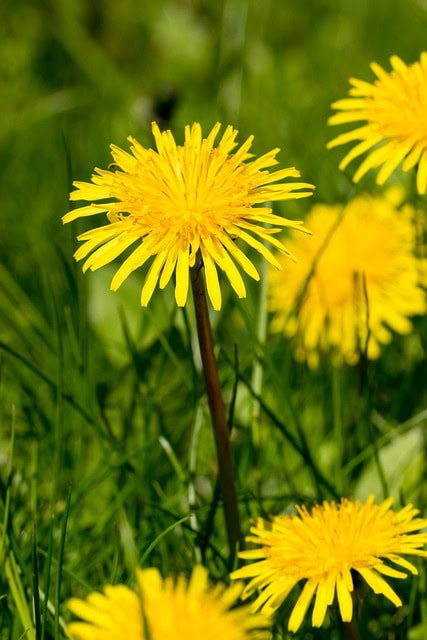
Dandelions (Taraxacum officinale) often find themselves underappreciated in gardens, but they are valuable companions for cabbage. Their deep taproots draw nutrients from deeper soil layers, improving soil fertility for nearby plants. Dandelions also provide essential minerals and vitamins, which can enhance the health of the soil by increasing biodiversity. Additionally, dandelion flowers attract beneficial pollinators and predatory insects like ladybugs, which can help control aphid populations. Their ability to grow in a variety of conditions makes them hardy helpers in any garden setup.
Celery
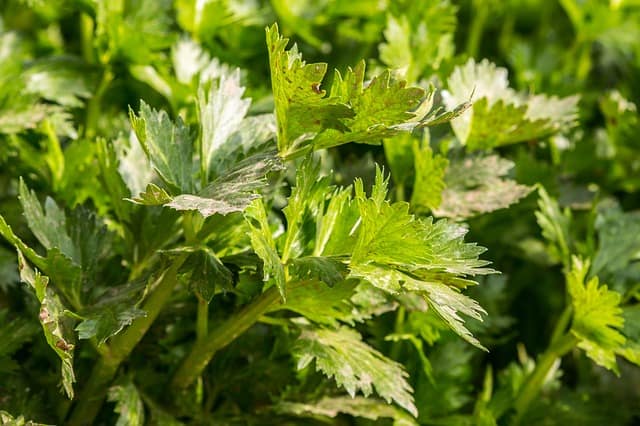
Celery (Apium graveolens) thrives together with cabbage thanks to their similar water and nutrient requirements. Celery helps keep the soil around cabbage cool and moist, which is essential during the hot summer months. The taller growth habit of celery provides shade to cabbage, preventing sunburn on developing leaves. Additionally, celery has pest-repelling qualities that ward off common cabbage pests like aphids and carrot flies. In return, cabbage supports celery with its broad leaves that can help protect the delicate celery stalks from midday sun and drying winds.
Mâche
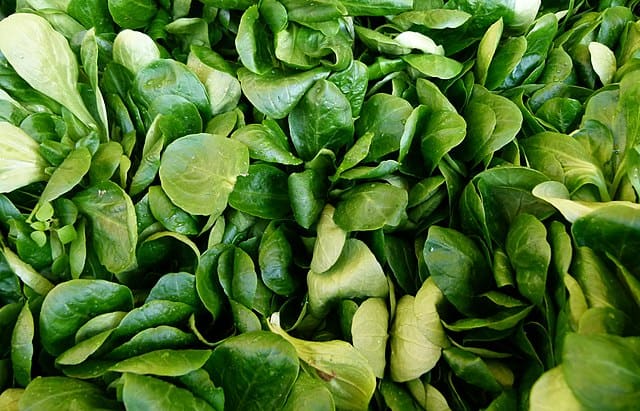
Mâche (Valerianella locusta), sometimes referred to as lamb’s lettuce, offers a unique growing complement to cabbage. The leafy green thrives in cooler temperatures, similar to cabbage, and can be sown in early spring or late summer for a fall harvest. Its dense foliage can help retain moisture in the soil, reducing the need for excessive watering, which benefits both plants. Additional advantages include its ability to suppress weeds, thus reducing competition for cabbage. Mâche’s slow-growing and low habit allows for efficient use of space, as it can be planted in between cabbage rows.
Onions
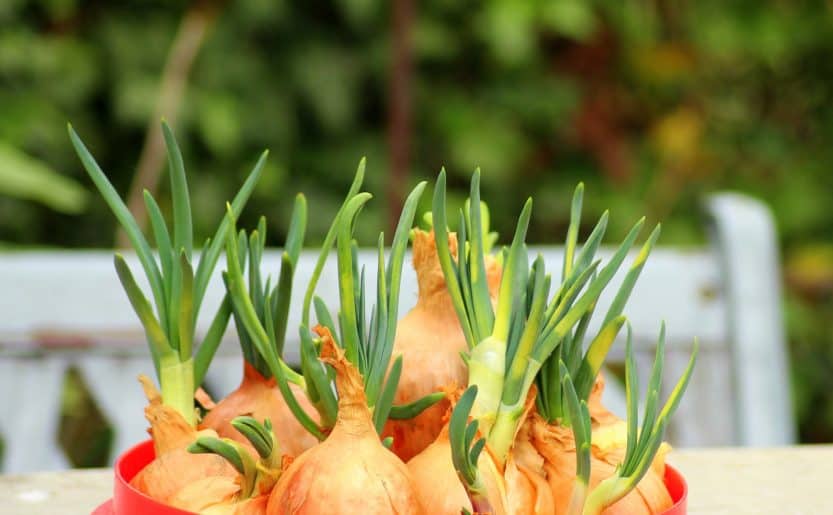
Onions (Allium cepa) have a long-standing reputation as effective companions for many crops, including cabbage. Their pungent scent serves as a repellent against various pests, including aphids and caterpillars that threaten cabbage plants. Onions also thrive in similar soil conditions, necessitating fertile, well-draining earth that holds moisture without becoming soggy. Furthermore, the contrasting growth habits of the plants can be advantageous; onions grow vertically while cabbage forms dense heads, allowing them to utilize garden space efficiently. The dual offerings of pest control and productive growth knit an excellent relationship between these two plants.
Garlic
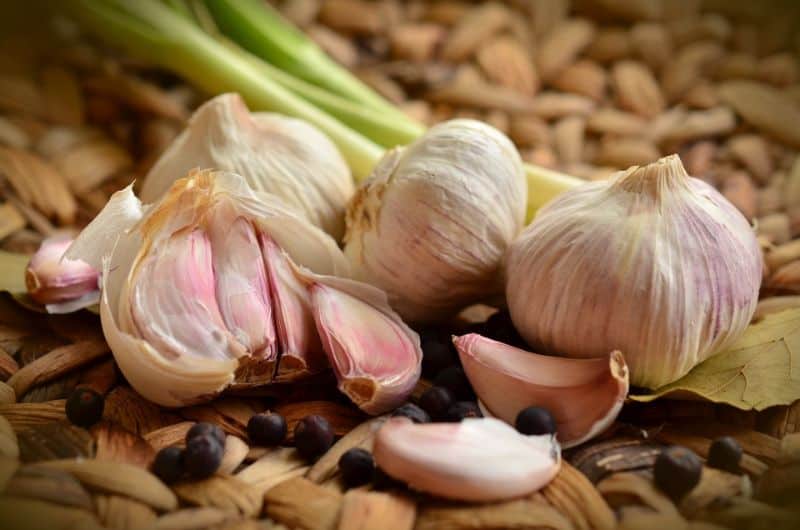
Garlic (Allium sativum) brings not only culinary flavor but also numerous benefits as a companion to cabbage. Its strong smell can deter aphids and other pests harmful to cabbage. Garlic prefers similar growing environments, including rich, well-drained soil, further enhancing their compatibility. Growing garlic in the same bed as cabbage creates a synergistic relationship; garlic can help protect cabbage while improving soil structure due to its fibrous roots. This duo is mutually beneficial, lending flavor to dishes while improving garden health.
Arugula
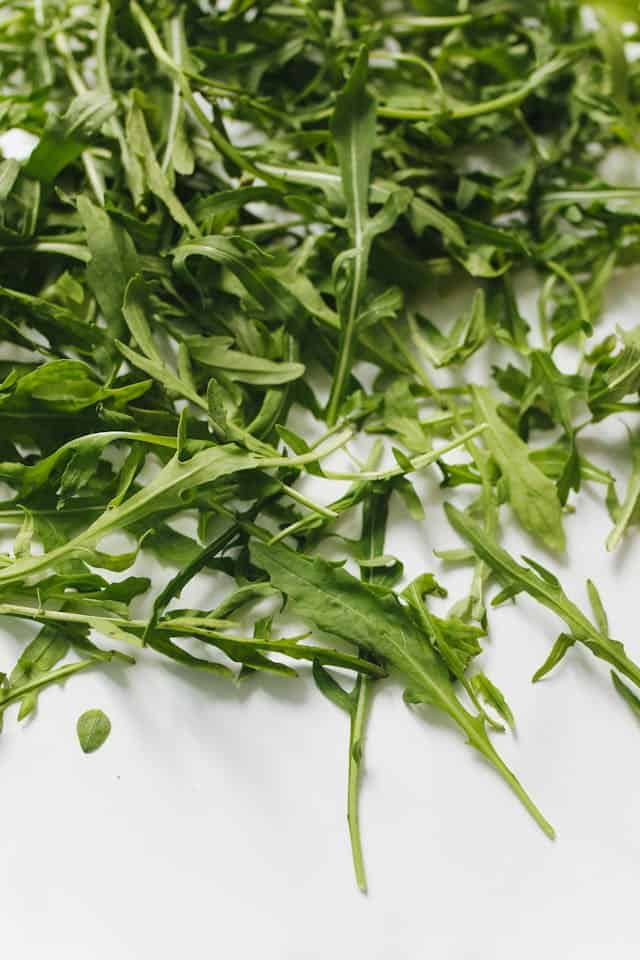
Arugula (Eruca sativa) is a great choice for the cabbage garden. Its rapid growth ensures a fast harvest, usually ready within weeks, allowing for efficient use of space without straining resources. The fresh, peppery leaves of arugula can provide ground cover, keeping soil moisture levels stable for nearby cabbage. This beneficial crop also has pest deterrent capabilities, as its strong flavor can repel some herbivorous insects while attracting beneficial pollinators like bees. However, be mindful of spacing, as arugula should not overshadow cabbage or compete for light.
Herb Companions
Thyme

Thyme (Thymus vulgaris) is a drought-resistant herb that thrives in well-drained, sunny locations, aligning well with the cabbages’ preference for full sunlight. Its compact growth habit allows it to coexist without competing too much with cabbage for space and resources. Thyme is known for attracting beneficial pollinators, such as bees, when it flowers. Moreover, it possesses antimicrobial and pest-repelling properties, aiding in the overall health of the garden. This aromatic herb can also be harvested for culinary use, providing gardeners with added benefits from a single planting area.
Sage
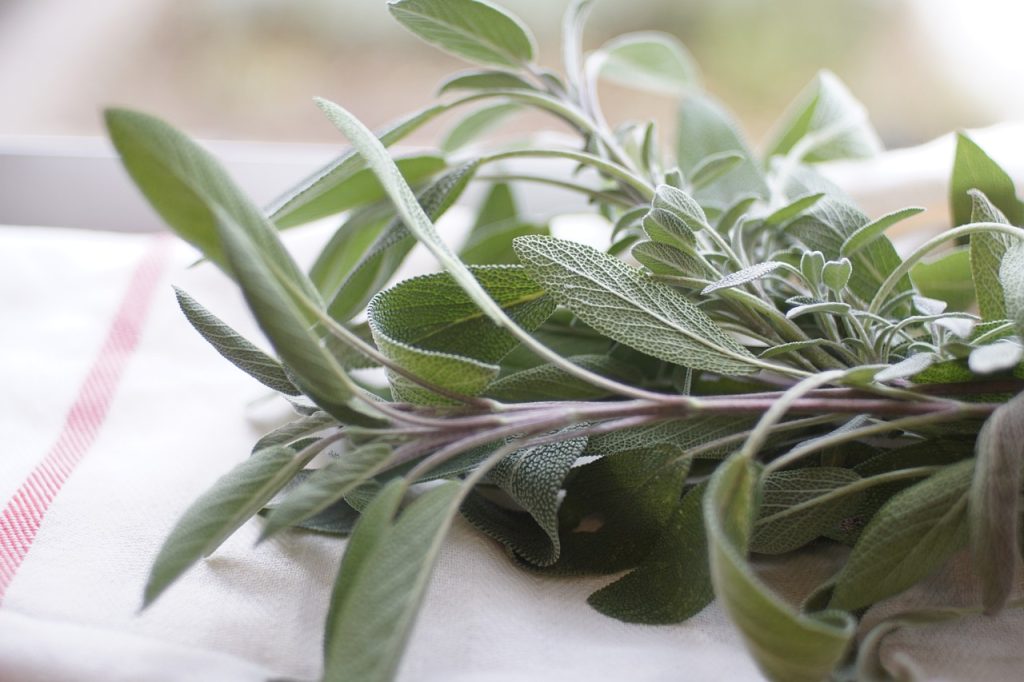
Sage (Salvia officinalis) offers a stunning visual presence in addition to practical applications in the garden. The aromatic leaves deter common pests like cabbage moths, thereby providing a protective buffering layer for cabbage plants. Additional advantages include its compatibility with the soil type and the similar light conditions required for both herbs and cabbages. As sage matures, its extensive root system can help improve soil structure while its flowers attract pollinators. Harvesting sage for culinary purposes enhances its desirability in the vegetable garden.
Oregano
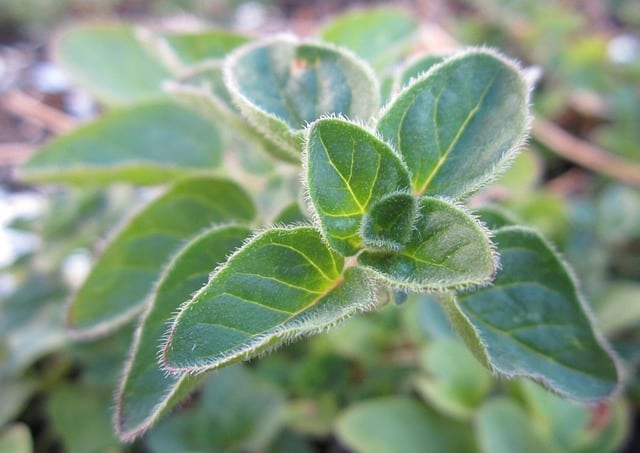
Oregano (Origanum vulgare) thrives under similar growing conditions as cabbage, preferring well-drained soil and full sun. Its aroma contributes to pest management by repelling troublesome insects, including aphids and other pests that might otherwise favor cabbage. Oregano grows as a low ground cover, which can help retain soil moisture and control weeds around cabbage plants. This herb’s resilience makes it an easy addition to a garden, while its culinary applications and health benefits only add to the reasons to plant it alongside cabbage.
Chives
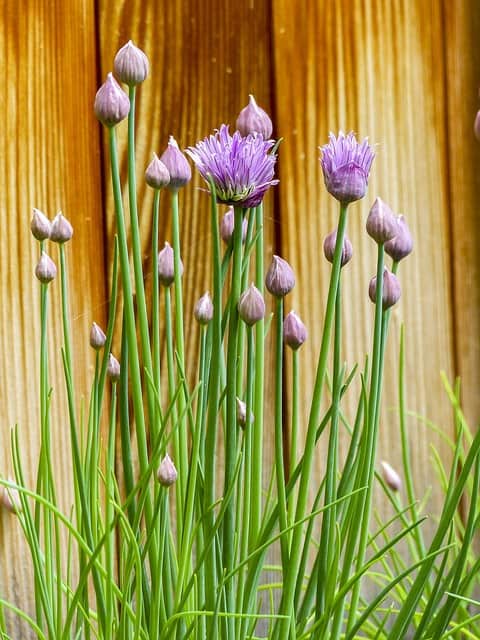
Chives (Allium schoenoprasum) are exceptionally beneficial companions for cabbage. Their mild onion flavor and delicate, edible flowers attract pollinators while preventing harmful pests like aphids from approaching the cabbage. Chives thrive in similar conditions as cabbage and are easy to cultivate, making them ideal candidates for companion planting. Additionally, gardeners can take advantage of chives in the kitchen, as both the leaves and the flowers add flavor and beautiful color to dishes. This combination of utility in pest control and culinary reinforcement makes chives a valued ally in the garden.
Catnip
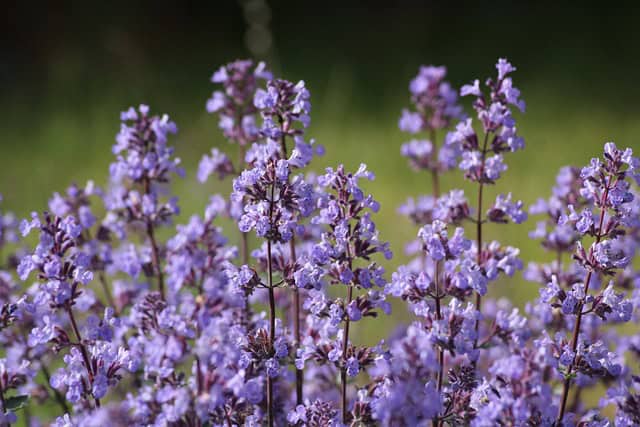
Catnip (Nepeta cataria) is commonly known for its effects on felines, but it also serves several beneficial purposes for cabbage growth. Its scent repels pests such as aphids, cabbage moths, and other problematic insects. Additionally, catnip attracts beneficial insects, including ladybugs and hoverflies, which help control pest populations around cabbage. Catnip grows well in similar conditions as cabbage and can act as a natural barrier for pests while contributing to a diverse and vibrant garden ecosystem.
Dill
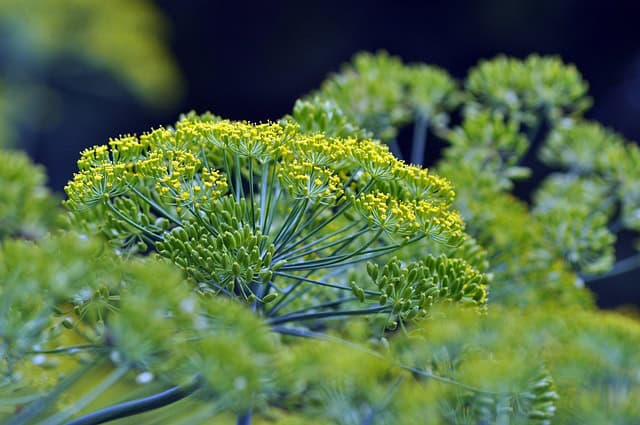
Dill (Anethum graveolens) is not only a flavorful herb that pairs well in the kitchen with cabbage dishes, but it also attracts beneficial insects, such as ladybugs and lacewings. These insects serve as natural predators to harmful pests that negatively impact cabbage crops. However, gardeners should pay attention to dill’s growing habits; it can affect the flavor of nearby cabbage if planted too closely. Dill prefers plenty of sunlight and well-draining soil, and with proper spacing, it can flourish alongside cabbage, creating a mutually beneficial relationship.
Basil
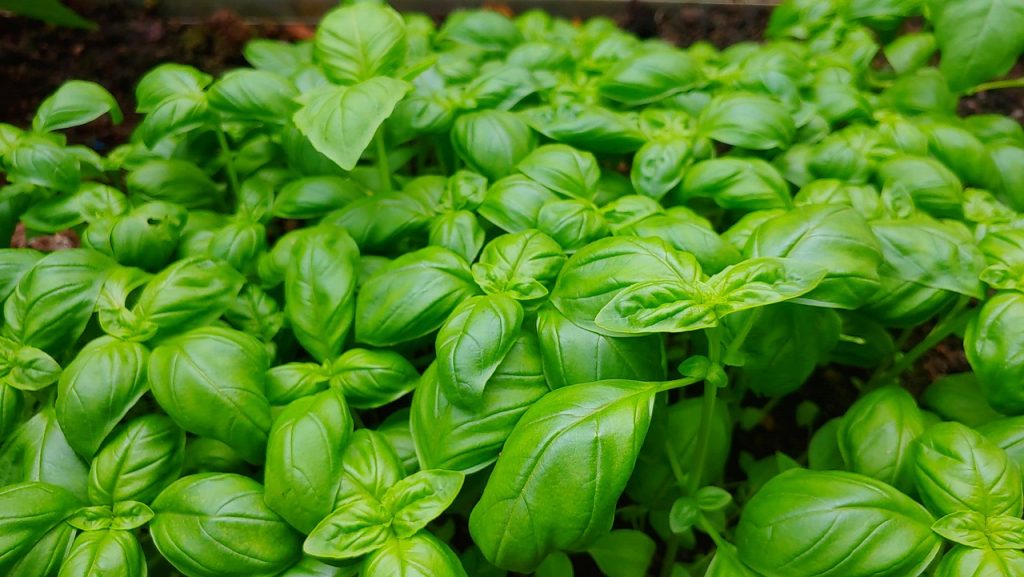
Basil (Ocimum basilicum) brings both culinary and pest-repelling advantages to cabbage cultivation. Its strong aroma serves to deter common pests like aphids, which are a nuisance for cabbage. Growing basil near cabbage can also attract pollinators, enhancing overall garden health. Both plants thrive in full sun and well-drained soil, creating a suitable environment when grown together. The companionship supports the aesthetic and gastronomic appeal of the garden, allowing for an abundance of fresh ingredients during the growing season.
Flower Companions
Marigold
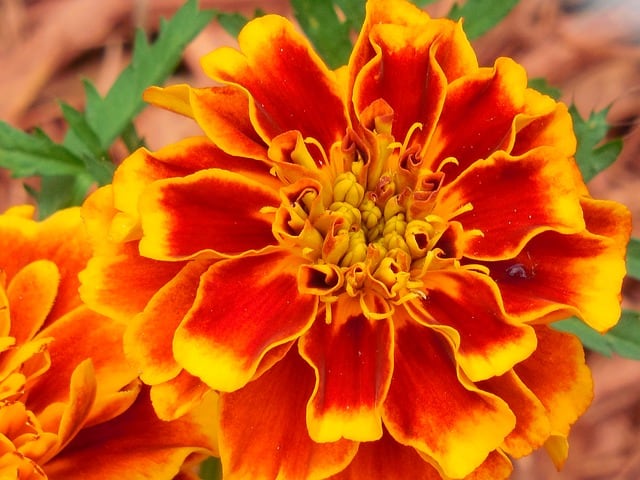
Marigolds (Tagetes spp.) are often hailed as the champion of pest control in gardens. These cheerful flowers produce compounds in their roots that deter nematodes and other soil-borne pests, an invaluable trait for protecting roots in the vegetable garden. Their vibrant colors attract essential pollinators while deterring harmful insects. Planting marigolds alongside cabbage not only enhances the aesthetic appeal of the garden but also fosters healthier vegetable growth through improved pest management.
Calendula
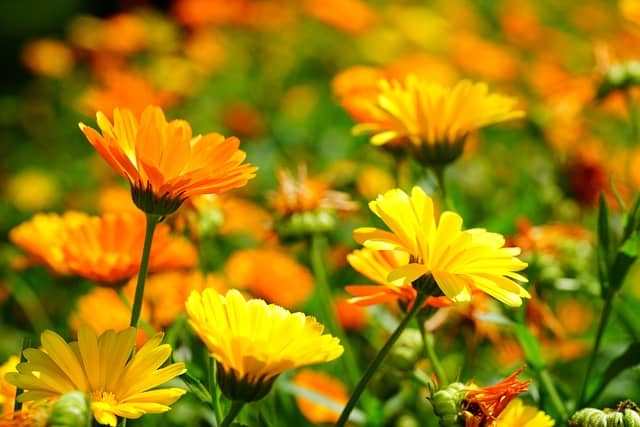
Calendula (Calendula officinalis) is another outstanding flower companion for cabbage. Its pollen-rich flowers are magnets for beneficial insects, including ladybugs and lacewings, which help control aphid populations and other pests. Calendula can serve as a trap crop, drawing harmful insects away from cabbage while also providing vibrant blooms for visual interest. Its healing properties, often used in herbal remedies, enable gardeners to harvest more than just crops – they can also collect beneficial flowers for medicinal uses.
Nasturtium
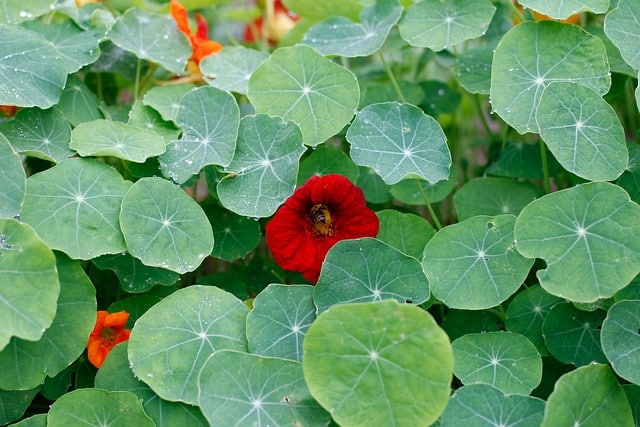
Nasturtiums (Tropaeolum majus) bring a vibrant splash of color and a variety of benefits as companions for cabbage. Their sprawling growth habit can create a natural ground cover, helping to retain soil moisture and prevent weeds that might compete for nutrients. The bright flowers and edible leaves attract pollinators while the plant itself can serve as a trap for aphids, drawing pests away from more vulnerable cabbage plants. Furthermore, nasturtium leaves and flowers can be harvested for salads and garnishes, creating additional culinary rewards for gardeners.
Avoid Growing These With Cabbage
Corn
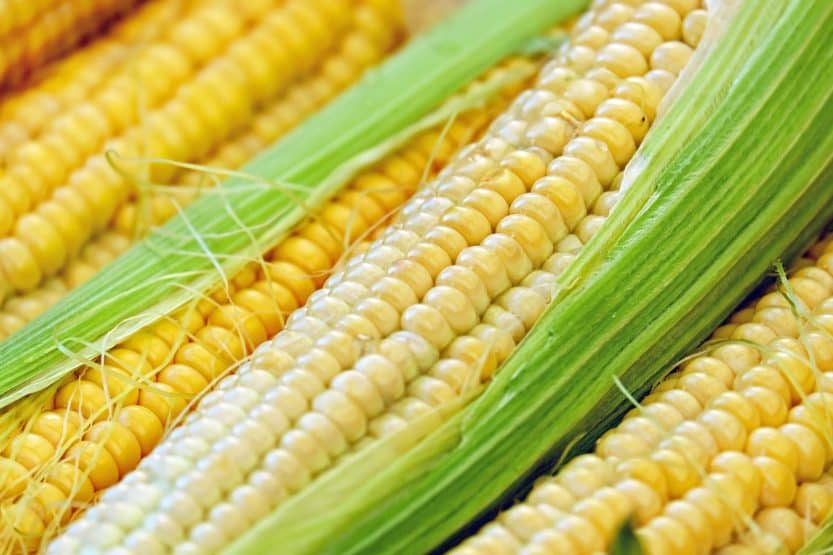
Corn (Zea mays) and cabbage should generally be kept apart in the garden. Corn grows tall and can overshadow cabbage, inhibiting its growth by obstructing sunlight. Additionally, corn has deep roots that can compete for nutrients with cabbage, leading to reduced vitality for both crops. Corn can also attract pests like the corn earworm, which may divert their attention to nearby cabbage plants. Due to these competitive traits, interplanting corn and cabbage often leads to suboptimal outcomes for both crops.
Pumpkins
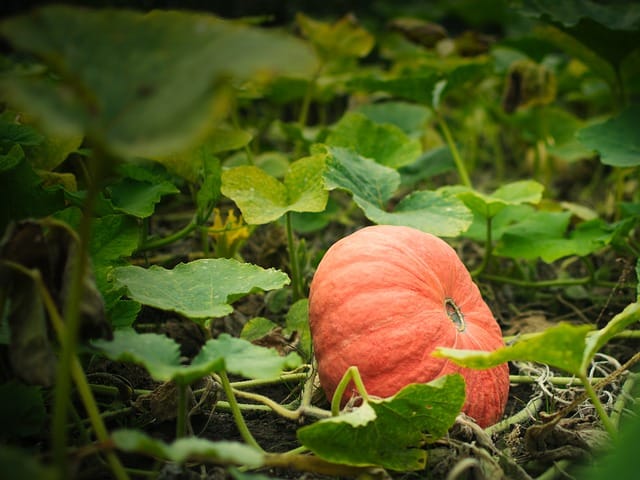
Pumpkins (Cucurbita pepo) present similar challenges when planted near cabbage. Their sprawling vines can easily overshadow and dominate space, diminishing light availability for cabbage plants. Pumpkins also have significantly different water and nutrient needs; their larger size means they consume more resources, potentially starving cabbage of essential nutrients. Moreover, pumpkins can attract pests that might also be detrimental to cabbage; by growing these two plants together, you can inadvertently set the stage for pest infestations and inadequate growth.


